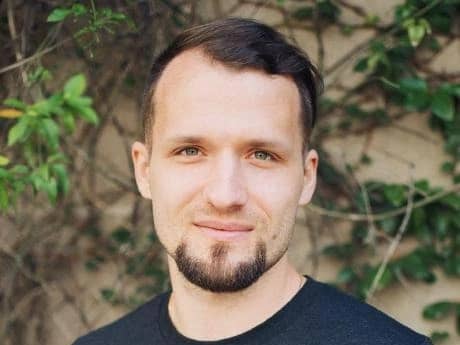위키 구독하기
Share wiki
Bookmark
Anton Bukov
Anton Bukov
**안톤 부코브(Anton Bukov)**는 소프트웨어 개발자이자 여러 DEX(분산형 거래소)에서 거래를 최적화하도록 설계된 1inch의 공동 창립자입니다. [1]
교육
부코브는 2011년에 모스크바 국립 로모노소프 대학교(Lomonosov Moscow State University)를 졸업했습니다. [1]
경력
부코브는 2014년에서 2015년경에 거래소를 위한 공간적 차익거래 봇을 만들면서 처음으로 블록체인 기술을 접했습니다. 거래소 간 가격 차이로 인해 수익성 문제에 직면했음에도 불구하고, 그의 블록체인에 대한 관심은 몇 년 동안 줄어들었습니다. [2]
그의 블록체인에 대한 관심은 2017년 8월 카잔에서 열린 해커톤에서 스마트 계약 개발에 몰두하면서 다시 살아났습니다. 부코브는 코드 품질과 효율성에 중점을 둔 것에 깊은 인상을 받아 이 분야를 더 탐구했습니다. 1inch 네트워크의 공동 창립자인 세르게이 쿤츠(Sergej Kunz)와의 협업을 통해 CryptoManiacs 팀을 만들고 해커톤에 참가하며 미래의 1inch 팀원들과 연결되었습니다. [2]
“iOS는 개발자 경험으로 저를 매료시켰지만, 스마트 계약 개발에서 저를 사로잡은 것은 높은 수준의 코드 품질이었습니다. 일반적으로 프로젝트를 개발할 때 코드를 완벽하게 만들 시간이 없습니다. 일단 코드를 작성하고 나면 돌아가서 개선하려는 기회가 없습니다. 기본적으로 제품을 개발할 때는 코드보다는 제품에 중점을 둡니다. 반대로 스마트 계약의 경우 코드가 가장 중요합니다. 여기서는 코드에 중점을 두고 가능한 한 효율적으로 만들어야 합니다. 또한 코드가 작성되면 감사자가 디자인과 최적화에 대한 제안을 할 수 있습니다.”
“당시 러시아의 많은 사람들은 스마트 계약이 어떻게 작동하는지 전혀 몰랐고, 스마트 계약은 완전히 안전하며 사용자의 돈을 훔치는 것은 불가능하다고 확신했습니다. 그들은 스마트 계약의 소스 코드를 사용할 수 없다면 아무것도 보장할 수 없다는 것을 이해하지 못했습니다. 그래서 우리는 프로젝트에 접근하여 감사를 위해 소스 코드를 요청하기 시작했습니다. 결국 코드에서 여러 가지 버그와 백도어를 발견했습니다.”
2019년 5월, 그들은 뉴욕에서 열린 해커톤에서 1inch 프로토콜의 초기 버전을 개발했습니다. 이 행사에서 인정을 거의 받지 못했지만, 그들은 계속해서 솔루션을 개선하여 결국 1inch의 공동 창립으로 이어졌습니다. 2020년 5월부터 부코브는 이 프로젝트에 전념하고 있습니다. [2]
“해커톤에서 만든 프로젝트 중 일부는 오늘날에도 사용할 수 있습니다. 그들은 모두 웹 프런트엔드와 스마트 계약을 포함하는 자체적으로 지속 가능한 dApp이었습니다... 일반적으로 우리는 여러 후보에 선정되며, 상금은 기본적으로 항공권과 호텔 비용을 충당합니다. 그러나 그때는 사소하고 터무니없는 상을 받았습니다.”
인터뷰/패널
잘못된 내용이 있나요?
